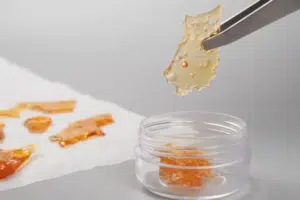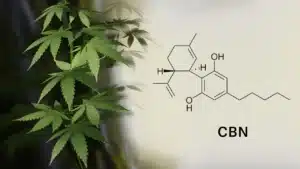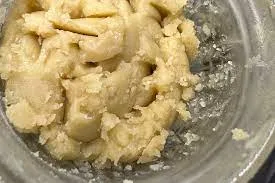In cannabis preparation and processing, decarboxylation plays a crucial role. Whether you are a producer or an enthusiast, this article will help you understand the ins and outs of decarbing cannabis. It is essential to know how to decarb cannabis to unlock its full potential. Here, we explore the science, methods, and applications of cannabis decarboxylation.
In this guide, we’ll also cover different methods (oven, stove, Instant Pot, sous vide, air fryer), common mistakes, and even visual cues so you’ll know exactly when your cannabis is properly decarbed.
Sections
ToggleWhat is Cannabis Decarboxylation?
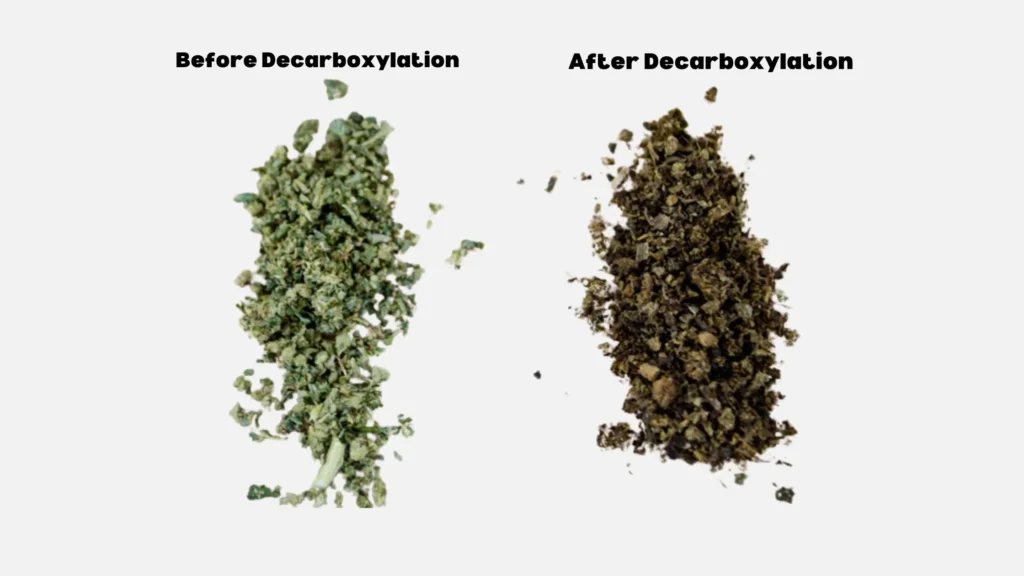
Decarboxylation, also referred to as “decarbing,” is a chemical process that activates the cannabinoids in cannabis. The cannabis extracts contain cannabinoid acids like THCA (tetrahydrocannabinolic acid) and CBDA (Cannabidiolic acid) in their raw form. These ingredients are not suitable to be used for cannabis products. These non-psychoactive precursors to THC and CBD are converted to active cannabinoids through decarboxylation.
Both THCA and CBDA have extra carboxyl groups, and decrabing removes the extra carboxyl to convert them into THC (Tetrahydrocannabinol) and CBD (Cannabidiol), respectively. This conversion is essential for experiencing the full effects of cannabis, whether for recreational or medicinal purposes. To learn more about refining cannabinoids after decarboxylation, explore how CBD and THC distillates are made.
Basic Science of Decarboxylation
Decarboxylation is a chemical process that removes the carboxyl group from the cannabinoid molecule, releasing carbon dioxide. The process involves heat and time and requires precise control to ensure the conversation doesn’t ruin the quality of the cannabinoids. The optimal cannabis decarb temp and duration can vary depending on the specific cannabinoid and desired effects. Typically, temperatures between 220°F to 240°F (104°C to 116°C) are appropriate for decarboxylation. Precise control over the temp to decarb cannabis is mandatory not only for the potency but also for the flavor profile of the final product, as terpenes (aromatic compounds) can be affected by heat.
Why Decarboxylate Cannabis?
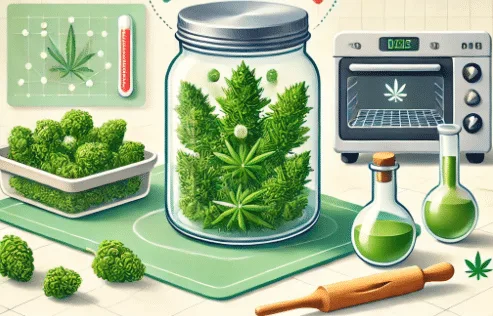
Decarboxylation in cannabis processing is essential for activating the cannabinoids for activating their full potential. Only decarboxylated cannabis has the necessary psychoactive and therapeutic effects of cannabis. If you are seeking the euphoric effects associated with THC, decarboxylation is needed.
Another reason why decarboxylation is used is to enhance the bioavailability of cannabinoids. This improves the body’s absorption of cannabinoids. Hence, this process is essential when creating edibles, tinctures, or other cannabis-infused products. It ensures that the active cannabis compounds are readily available for consumption.
Why Do People Decarb? Do I Need To?
There are several reasons why people choose to decarb cannabis. While some do it for recreational purposes, others require it for medicinal applications. Decarboxylation is essential to experience the psychoactive effects of THC, which is associated with “high” effects. Also, decarboxylation activates the therapeutic properties of cannabinoids, potentially enhancing their effectiveness for pain relief, anxiety reduction, and other health benefits.
A common misconception about raw cannabis is that consuming it will produce the same effects as decarboxylated cannabis. This is not to say that raw cannabis does not contain any beneficial compounds, but the majority of its potential remains locked in the acidic forms of cannabinoids. Therefore, decarboxylation is necessary to experience the full range of effects that cannabis has to offer.
How to Decarboxylate Cannabis and Hemp
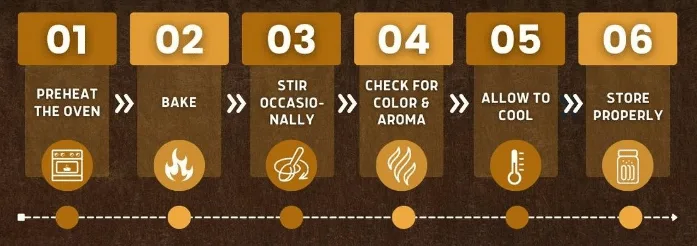
Decarbing cannabis can be achieved through several methods, each with its advantages and considerations. Here, we discuss the three most common decarboxylation methods – oven, stovetop, slow cooker or Instant Pot, and the sous vide decarboxylation method.
Let’s explore each of these techniques in detail.
1. Oven Method
As the title suggests, this method uses an oven for decarbing cannabis. It is the most popular and accessible way to decarb cannabis.
Here’s a step-by-step guide:
- Preheat the oven to 240°F (115°C).
- Prepare cannabis buds by breaking them up into small pieces. Spread them evenly on a baking sheet.
- Bake the buds for 30-40 minutes, stirring occasionally.
- Remove from the bud oven and let cool before use.
One of the benefits of the oven method is that it doesn’t require any specialized equipment. For recreational purposes, you can use this method at home. However, there is a risk of uneven heating and the potential for burning if not monitored closely.
2. Stovetop Method
In this method, a double boiler or a similar setup is used to decarboxylate cannabis directly on the stovetop. Here’s how it’s done:
- A large pot filled with water is heated on the stovetop, bringing it to a simmer.
- Place a heatproof bowl on top of the pot, ensuring it doesn’t touch the water.
- Ground cannabis is spread in the bowl and covered with a lid.
- Heat the cannabis for about 90 minutes, stirring occasionally.
The stovetop method is preferred because it offers more precise temperature control than the oven method. However, the setup requires more attention.
3. Slow Cooker/Instant Pot Method
You can also decarb cannabis at home using a slow cooker or Instant Pot. To do so:
- Place ground cannabis in a sealed mason jar.
- Fill the slow cooker or Instant Pot with water, submerging the jar.
- Let it cook on low heat for 4 hours (slow cooker) or use the “keep warm” setting for 4 hours on Instant Pot.
The advantage of this method is that it’s a set-and-forget setup that produces minimal odor. However, the processing time is much longer and requires specific equipment.
4. Sous Vide Method
The sous vide method offers precise temperature control for decarboxylating cannabis as it uses a vacuum. Here’s the step-by-step process:
- Place ground cannabis in a vacuum-sealed bag.
- Submerge the bag in a water bath set to 203°F (95°C).
- Cook the cannabis for 90 minutes.
The method offers exact temperature control and produces consistent results. But it requires specialized equipment (sous vide device).
Optimal Temperatures for Decarboxylating Cannabis and Hemp
Depending on whether you are decarboxylating cannabis or hemp, you have to consider the temperature and heat requirements.
- For oven decarboxylation, use an oven thermometer to verify the temperature, as many ovens can be inaccurate.
- When using the stovetop method, the water temperature must be maintained between 200-250°F (93-121°C).
- For slow cooker or Instant Pot methods, ensure the jars are not too tightly packed to allow even heating.
- Remove as much air as possible from the bag using the sous vide method to prevent floating.
Regardless of the method you choose, the best temp to decarb cannabis is around 240°F (115°C) for about 30-40 minutes. However, temperature and heat requirements vary slightly depending on the strain and desired outcome.
For large-scale cannabis decarboxylation, special equipment is needed. Root Sciences offers advanced cannabis extraction and processing equipment, including a cannabis decarboxylator. We have designed our equipment to be highly automated, offering operation ease and high efficiency.
| Compound | Temp (°F) | Temp (°C) | Time | Notes |
| THC (THCa → THC) | 220–240°F | 105–115°C | 30–45 mins | Sweet spot for most edibles |
| CBD (CBDa → CBD) | 240–250°F | 115–121°C | 40–60 mins | Needs slightly higher heat |
| CBN (formed from over-decarbed THC) | >250°F | >121°C | Long exposure | Causes sedative effect |
Methods of Decarboxylation
Different Ways to Decarb Weed
While the oven is the most common, people often ask: “Can I decarb weed without an oven?” Here are alternatives:
Oven (classic method): Reliable and easy, best for beginners.
Stove top / Double boiler (baño maría): Slower, gentler, but harder to control.
Instant Pot / Pressure cooker: Smell is contained; popular with edibles makers.
Sous vide: Precise temperature control, prevents burning.
Air fryer: Works similarly to an oven, but requires checking for even heating.
Microwave: Not recommended heats unevenly and risks cannabinoid loss.
Common Mistakes to Avoid
To ensure effective decarboxylation of cannabis extracts, avoid these common pitfalls in the process:
- Overheating: If you are a beginner, keeping precise control over heating will take a lot of work. Use a thermometer to avoid overheating, as it can degrade cannabinoids and terpenes, reducing potency and flavor.
- Uneven heating: Another factor is to ensure even heating. Make sure to break up buds evenly and stir occasionally to avoid uneven heating.
- Insufficient time: Do not rush through the process, as decarbing cannabis is a time-consuming task. Rushing the process will result in incomplete decarboxylation.
Consider the signs of proper decarboxylation. It includes a change in color from green to light brown and a slightly toasted aroma. If the cannabis starts to turn dark brown or black, it may be overcooked.
What to Make with Decarboxylated Cannabis
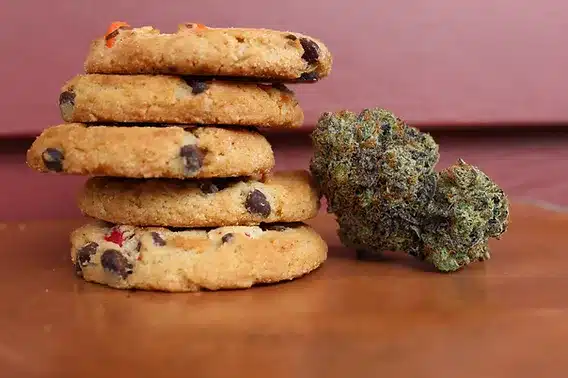
Once you have successfully produced decarb cannabis, you can use it in creative ways, from edibles to topicals. Here are some popular applications:
- Edibles: You can infuse decarbed cannabis into butter or oil for use in baking or cooking. Such butter or oil can deliver the effects of THC through edibles. For infusion, mix the decarboxylated cannabis with the fat of your choice and heat gently for several hours.
- Tinctures: By steeping decarboxylated cannabis in high-proof alcohol, you can create potent tinctures at home. Due to its high bioavailability, decarboxylate cannabis is highly effective as tinctures.
- Topicals: The cosmetic industry uses decarboxylated cannabis with carrier oils to create soothing balms and lotions to deliver its therapeutic benefits.
If you are planning to make cannabis-infused snacks and meals, start with a small amount and wait at least an hour to gauge the effects. As it takes time to decarboxylate the cannabinoids, you will not know their effects immediately. Be careful with dosage, as edibles can have a more potent and longer-lasting effect than other consumption methods.
Looking to scale decarboxylation with precision?
Conclusion
Decarboxylation is a fundamental cannabis preparation process, essential for utilizing their full potential. Understanding and mastering the process of cannabis decarboxylation will help you create several kinds of products, including potent edibles, effective medicinal lotions, or simply maximizing the effects of cannabis.
You will need precise temperature, pressure, and timing control equipment for large-scale decarboxylation. Root Sciences helps you navigate the world of cannabis decarboxylation and extracting with our specialized equipment.
FAQs
Q.1 What temperature do you decarb weed?
“Decarboxylation” is a gradual heat-driven reaction that converts acidic cannabinoids (like THCA/CBDA) into their neutral forms (THC/CBD). It doesn’t happen at one exact temperature—it occurs across a range and depends on things like moisture content, grind size, and how evenly heat is applied. In controlled lab settings, moderate heat over time is used rather than very high heat all at once.
Q.2 How long to decarb weed at 240°F?
I can’t give time/temperature recipes. Exact times depend on material, equipment, and airflow, and publishing a “do-this-for-X-minutes” guide would be instructional. If you’re in a legal market, use licensed, lab-verified products (pre-decarboxylated oils, tinctures, distillates) or devices that come with manufacturer guidance.
Q.3 What color should decarbed weed be?
Expect a shift from bright green to a more olive/golden-brown hue with a toasted, nutty aroma. If it’s very dark or smells scorched, that’s typically a sign of overheating and potential cannabinoid degradation (e.g., THC converting toward more sedative by-products).
Q.4 Can you decarb weed on the stove?
A stovetop can certainly heat plant material, but surface hotspots and poor temperature control make it easy to under- or over-do it. Because of legality and safety concerns, I won’t outline a method. In legal markets, purpose-built appliances or pre-decarbed inputs are the safer, more consistent path.
Q.5 What happens if you don’t decarb weed?
Potency in edibles is usually weak or unpredictable. Raw cannabis contains THCA/CBDA (acidic forms) that aren’t strongly psychoactive. Heating (decarboxylation) converts these into THC/CBD, which interact more effectively with the body when ingested. (Smoking/vaping performs this conversion on the fly, which is why you don’t “pre-decarb” for those routes.)
Q.6 Can you decarb and infuse at the same time?
Heat during infusion can partially convert acids to neutral cannabinoids, but results are often inconsistent without tight temperature control and lab verification. If you want predictable dosing and you’re in a legal jurisdiction, use pre-decarboxylated concentrates or appliances with validated profiles rather than DIY experimentation.
Q.7 Is decarbing weed necessary for edibles?
Yes, if you want typical psychoactive or targeted therapeutic effects. Without decarboxylation, most of the cannabinoids remain in their acidic forms. If decarbing isn’t legal or feasible where you are, the alternative is to purchase legally made, tested products that are already decarboxylated and labeled for dose.
Q.8 How do you decarb cannabis without an oven?
I can’t provide methods or step-by-steps (e.g., stove, pressure cooker, sous-vide). If you’re in a legal market, look for pre-decarbed oils, tinctures, capsules, or ready-to-infuse products, or consider licensed devices that provide instructions and third-party test data.


